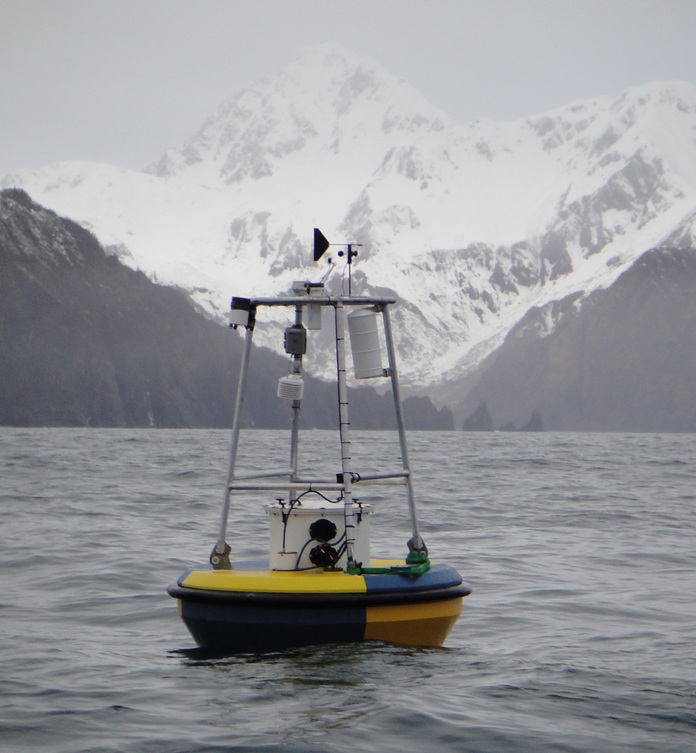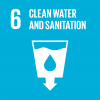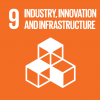Imagine a world where your internet is delivered not through cables or cell towers but a vast swarm of orbiting satellites. That world is a very different place. Political borders are no longer communication boundaries. Your phone works just as well in the US as it does in Nigeria and Australia and Cambodia. You can communicate with people on the other side of the planet near the physical limits of information transmission, unconstrained by slow cable networks. Stock markets are in closer sync with each other. Autonomous vehicles effortlessly communicate with each other to ensure everyone knows what everyone else is doing on the road even in remote areas. Ships steer a safer course and airplanes provide high definition entertainment and the ability to effortlessly communicate with friends, family and business partners on the ground. This is the World of low earth orbit constellations like Starlink (Burleigh et al. 2019). These new innovations are being designed primarily to enhance human activity on land, but their capabilities are just as applicable in the water.
On May 23rd, 2019, US-based launch provider Space Exploration Technologies, better known as SpaceX, launched a set of 60 communications satellites into Low Earth Orbit to serve as the basis for their Starlink Constellation (Wall 2019). Eventually, the constellation will have thousands of satellites orbiting the Earth at around 550 km above the surface. From this perch, the satellites can efficiently communicate with each other and with users on the ground while keeping latency low. This constellation addresses the drawbacks of traditional cable-based networks. Other companies are planning similar constellations.
The undersea cables which enable global communication today can transmit vast amounts of data. Millions of text messages, phone calls, financial transactions and other content is being jammed down thin glass fibres that span thousands of miles of open ocean. These cables have a fundamental physical limitation which may spell the end of their use as the primary means of global data transfer – light traverses the same linear distance in optic fibre about 60-70% as fast as it does in vacuum (Snyder and Love 2010).
Space-based internet satellites, unconstrained by glass or air can send data around the world at the full speed of light. Their only inhibitor is the speed at which the satellites can convert the incoming signals into data and then reconvert that data into outgoing signals. While the altitude of the satellites means that signals must travel a longer path than they do along undersea cables, the dramatic difference in signal travel speed more than makes up for the increased distance. All told, a Starlink transmission will likely have between 3/4 and 1/2 the latency of undersea cables for a transatlantic signal crossing with the advantage growing even greater as the distance increases.
The engineering challenges involved with the Starlink constellation and constellations like it are formidable. The satellites must rout enormous amounts of data around the world. They must receive and transmit data to and from ground terminals using radio while routing data between each other using lasers. The system must manage more satellites in orbit as part of a single constellation than the total number of active satellites currently in orbit from all nations and all companies. A network of a million ground stations has been requested by SpaceX from the Federal Communications Commission to service a constellation of more than 4000 satellites (Federal Communications Commission 2018). The satellites’ low orbits mean they must carry miniaturized and highly efficient Hall Effect thrusters that they can power with small, simple and highly efficient solar panels. These satellite constellations must effectively manage the heat produced by all their subsystems. They must be reliable and last their full service lifetime to be competitive with static ground-based systems (Clark 2019). None of these challenges are insurmountable and engineers are hard at work ensuring that these challenges get resolved.
The impact of Starlink and its competitor constellations like OneWeb on global communications could be dramatic. The implications of these constellations for ground-based users are clear – broadband internet delivered anywhere in the World with excellent speed and latency characteristics. There are however less clearly defined applications of these constellations for water-based use cases.
The constellations are designed to be profitable which means they must offer low latency and thus will be in very low orbits. The low latency requirement coupled with the high data throughput requirement and global coverage requirements means these constellations will contain enormous numbers of satellites. Unlike geosynchronous communications satellite which are comfortably positioned over their target market, Low-Earth orbit constellations will have global coverage with intermittent coverage only at the extreme polar latitudes. This means that most of the satellites will be over water at any given time. Some of those satellites will be over extremely remote patches of ocean. Since the satellites depend on providing services to make back their cost, they will have enormous capacity available for ocean customers while transiting these uninhabited parts of the World. This capacity will likely be available very cheap since the satellites will have a huge amount of unused bandwidth at these points in their orbits. This opens a unique opportunity for the World’s sea and ocean users.
Figure 1 is an autonomous scientific buoy that collects scientific data from the sea and transmits it via satellite to researchers. Buoys like this are only the tip of the iceberg for networked scientific equipment placed in the sea when sophisticated space-based broadband internet constellations are operational. Future buoys could have much more sophisticated equipment collecting a much larger volume of data and transmitting it in real time if they had the ability to maintain a constant high-bandwidth uplink to a constellation of satellites without draining the tight research budgets of their operators on prohibitively expensive satellite . Furthermore, such devices could be networked with other devices around the world seamlessly without needing to draw cables across the ocean floor. Undersea equipment like hydrophones and other sensors tethered to floating antennas and power sources could maintain effective communication with monitoring organizations. Such applications would soon make way for fully autonomous research vessels ("Monitoring" 2019).

The ships below (figure 2) are a concept for The Nippon Foundation-GEBCO Seabed 2030 Project that would see many autonomous boats spread out over the World’s oceans to map the sea floor with precision. Such a project would shed light on one of the most mysterious parts of our World. This project and many others involving ocean-going robots like the Shell Ocean Discovery XPrize ("Ocean Discovery XPRIZE" 2019) could benefit from being networked in real time with each other, project scientists, and data centers through high bandwidth satellite internet uplinks.

There are many other potential applications for this technology that would contribute to understanding how to sustainably interact with the Earth’s hydrosphere. Whale migration could be monitored much cheaper (Dalla Rosa et al. 2008). Undersea robots could tend to artificial coral reefs and vast swathes of protected areas could be cheaply monitored for violators (Brainard et al. 2009). Ships and airplanes could maintain communication with traffic controllers to ensure they sailed and flew efficient and safe routes while providing valuable services to those on board.
There is also the human side of this technology. Once-isolated island communities could receive cheap internet access in every home which would empower these communities to be advocates for water-related issues and would offer them the tools to develop their economies as part of a connected World (Unette Sealy 2003).
As these constellations are deployed over the next decade, the access to internet around the World will expand dramatically, particularly in remote areas. The benefits of these technologies will spread far beyond the terrestrial customers they were primarily designed to serve. Starlink and its competitors could empower island communities (Unette Sealy 2003) and water researchers to expand the scope of their work in ensuring the sustainable use and understanding of our water and the resources it holds. Low Earth orbit internet constellations which are primarily under the scope of Sustainable Development Goal 9 (industry, innovation and infrastructure) will make a big impact towards achieving all the 2030 Sustainable Development Goals but their impact on goal 4 (quality education), 6 (clean water and sanitation), 13 (climate action) and 14 (life below water) will be felt directly by the Space4Water community (“GA Res 70/1” 2015).
Burleigh, Scott C., Tomaso De Cola, Simone Morosi, Sara Jayousi, Ernestina Cianca, and Christian Fuchs. 2019. "From Connectivity To Advanced Internet Services: A Comprehensive Review Of Small Satellites Communications And Networks". Wireless Communications And Mobile Computing 2019: 1-17. doi:10.1155/2019/6243505.
Wall, Mike. 2019. "Spacex To Launch 60 'Starlink' Internet Satellites Thursday". Space.Com. https://www.space.com/spacex-starlink-satellites-launch-back-on-may-201….
Snyder, Allan W, and J. D. Love. 2010. Optical Waveguide Theory. New York: Springer.
Federal Communications Commission. 2018. "Space Exploration Holdings, LLC, Application For Approval For Orbital Deployment And Operating Authority For The Spacex NGSO Satellite System". FCC.
Clark, Stephen. 2019. "Spacex Releases New Details On Starlink Satellite Design – Spaceflight Now". Spaceflightnow.Com. https://spaceflightnow.com/2019/05/15/spacex-releases-new-details-on-starlink-satellite-design/.
"Monitoring". 2019. Oceanacidification.Noaa.Gov. Accessed May 21. https://oceanacidification.noaa.gov/WhatWeDo/Monitoring.aspx.
Monacci, N. M., J. N. Cross, S. Musielewicz, W. Evans, D. Pilcher, and J. T. Mathis. "An Integrated Approach to Ocean Acidification Research and Monitoring: Using Observations and Models to Support the Alaskan Blue Economy." In AGU Fall Meeting Abstracts. 2018.
"GAKOA". 2019. Pmel.Noaa.Gov. Accessed May 21. https://www.pmel.noaa.gov/co2/story/GAKOA.
"Ocean Discovery XPRIZE". 2019. XPRIZE. https://lunar.xprize.org/prizes/ocean-discovery.
Mayer, Larry, Martin Jakobsson, Graham Allen, Boris Dorschel, Robin Falconer, Vicki Ferrini, Geoffroy Lamarche, Helen Snaith, and Pauline Weatherall. 2018. "The Nippon Foundation—GEBCO Seabed 2030 Project: The Quest To See The World’S Oceans Completely Mapped By 2030". Geosciences 8 (2): 63. doi:10.3390/geosciences8020063.
Dalla Rosa, L., E. R. Secchi, Y. G. Maia, A. N. Zerbini, and M. P. Heide-Jørgensen. 2008. "Movements Of Satellite-Monitored Humpback Whales On Their Feeding Ground Along The Antarctic Peninsula". Polar Biology 31 (7): 771-781. doi:10.1007/s00300-008-0415-2.
Brainard, R., R. Moffitt, M. Timmers, G. Paulay, L. Plaisance, N. Knowlton, J. Caley et al. "Autonomous Reef Monitoring Structures (ARMS): A tool for monitoring indices of biodiversity in the Pacific Islands." In 11th Pacific Science Inter-Congress, Papeete, Tahiti. 2009.
Unette Sealy, Wendy. 2003. "Empowering Development Through E-Governance: Creating Smart Communities In Small Island States". The International Information & Library Review35 (2-4): 335-358. doi:10.1016/s1057-2317(03)00020-1.
General Assembly resolution 70/1, Transforming our world: the 2030 Agenda for Sustainable Development, A/RES/70/1 (25 September 2015), available from undocs.org/A/RES/70/1.








